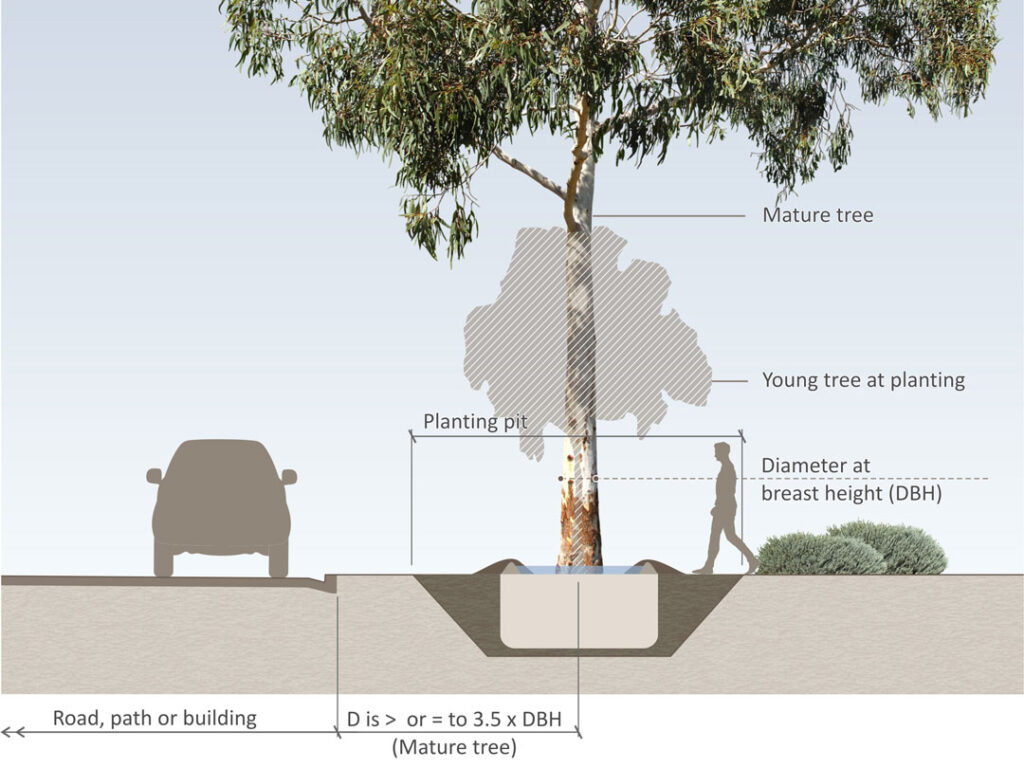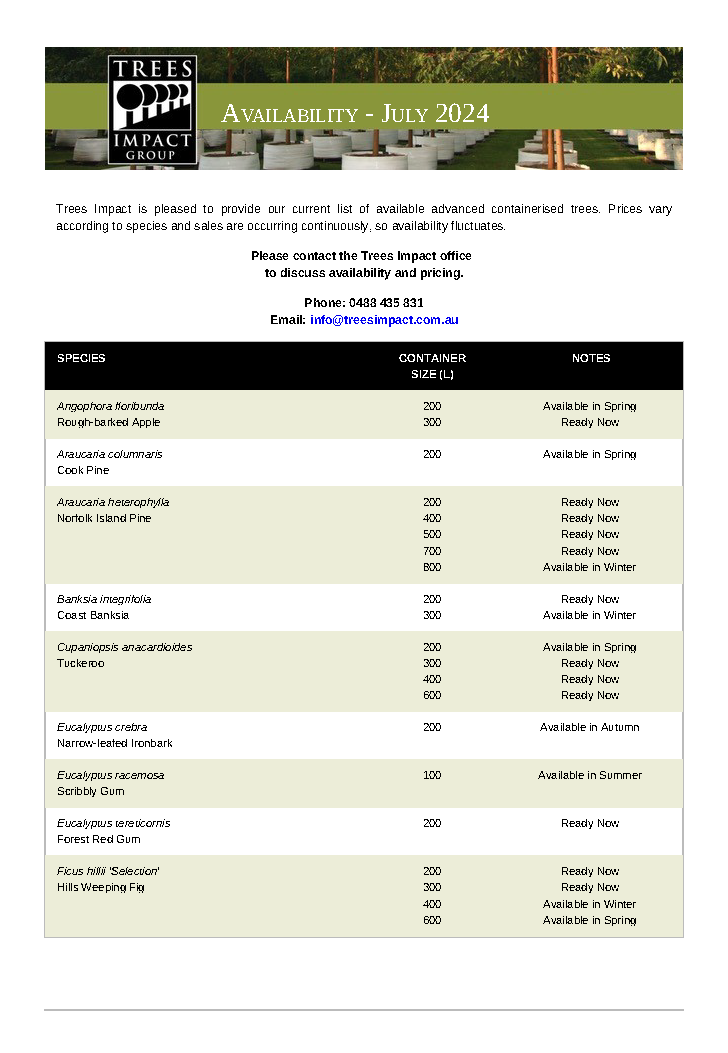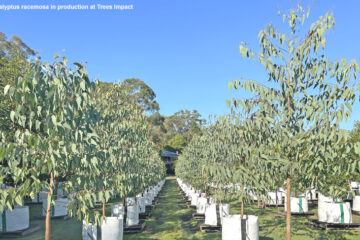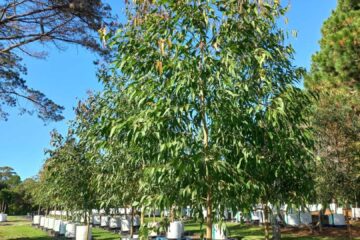Estimating the “Zone of Upheaval”
Minimising damage arising from the interaction between roots and hard surfaces.
THE PROBLEM
As a tree grows the base of the stem expands (trunk flare) and the diameter of the primary roots increases, particularly close to the base of the stem. These two phenomena can result in the generation of extreme forces in an area around the tree known as the “Zone of Upheaval”.
It is important that trees are planted far enough away from structures and other hard surfaces (e.g. paths and kerbs) to allow the tree to expand naturally, without future damage to the hard surfaces; and without damage the roots (thus compromising the health and stability of the tree). The bigger the mature tree will ultimately be, the bigger the allowance that should be made (at the time of planting!) for the likely Zone of Upheaval.
So, how far away from hard surfaces should we plant?
A WORKABLE FORMULA?
Here is a simple formula to estimate the planting distance to the nearest hard surface:
| Planting distance = 3.5 x DBH (Planting distance is measured from the centre of the planting pit. “DBH” is the estimated Diameter at Breast Height of the tree when mature – see ‘Estimating the Likely Diameter at Breast Height…’) |

[Note: The planting distances generated by this formula are not precise and never can be. They are estimates and should be used as a guide or target only. Outcomes will vary according to species; and available space will often limit options. But the aim is to get as close to these figures as possible. Where space is generous, we recommend this as a minimum. As a rule, the more space the better.]
RATIONALE
The need to provide for the expansion of the trunk and primary roots is beyond debate. The challenge is to create a simple formula that is both easy to use and credible – being based on the best arboricultural information available.
An authoritative source for guidance is the recent Australian Standard for the Protection of Trees on Development Sites (AS 4970-2009). This standard talks about the Structural Root Zone (SRZ) and describes it as “the area required for tree stability” (as opposed to the maintenance of the health and well-being of the tree). It seems to follow that if we provide for the future SRZ we will also allow for the future Zone of Upheaval.
But the formula for the SRZ is a bit complicated for general use, being:
SRZ radius = (D x 50)0.42 x 0.64
However, if you average the ratio between SRZ (radius) and stem diameter as displayed in AS 4970-2009 (page 11, Figure 1 “Structural Root Zone Calculation”) for trees with a DBH of between 0.4m and 1.6m you get a ratio of approximately 3.5 to 1. Hence our simple rule of thumb.


